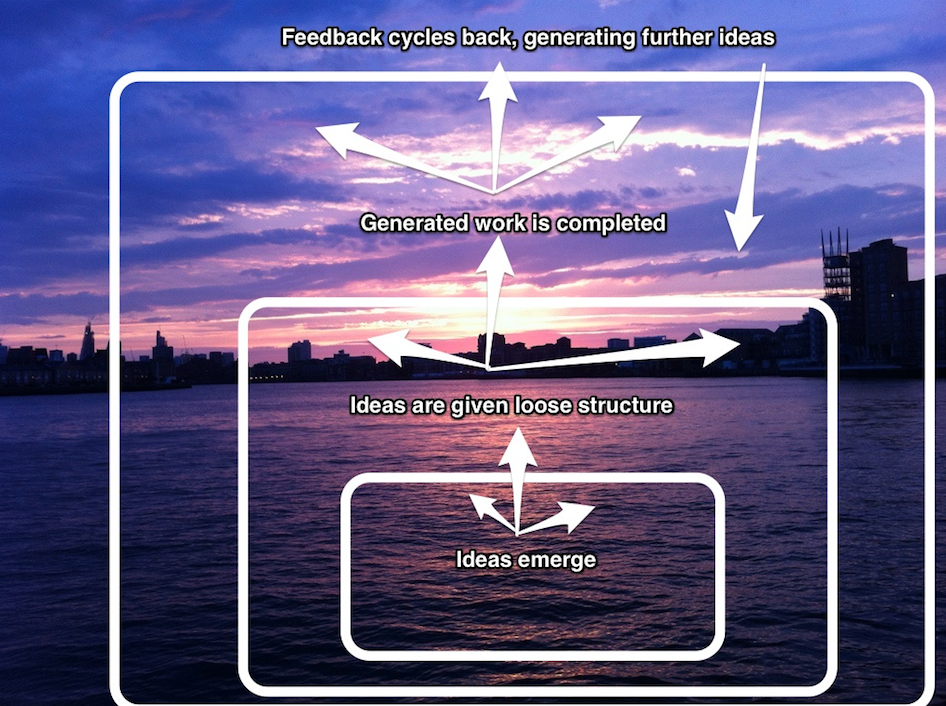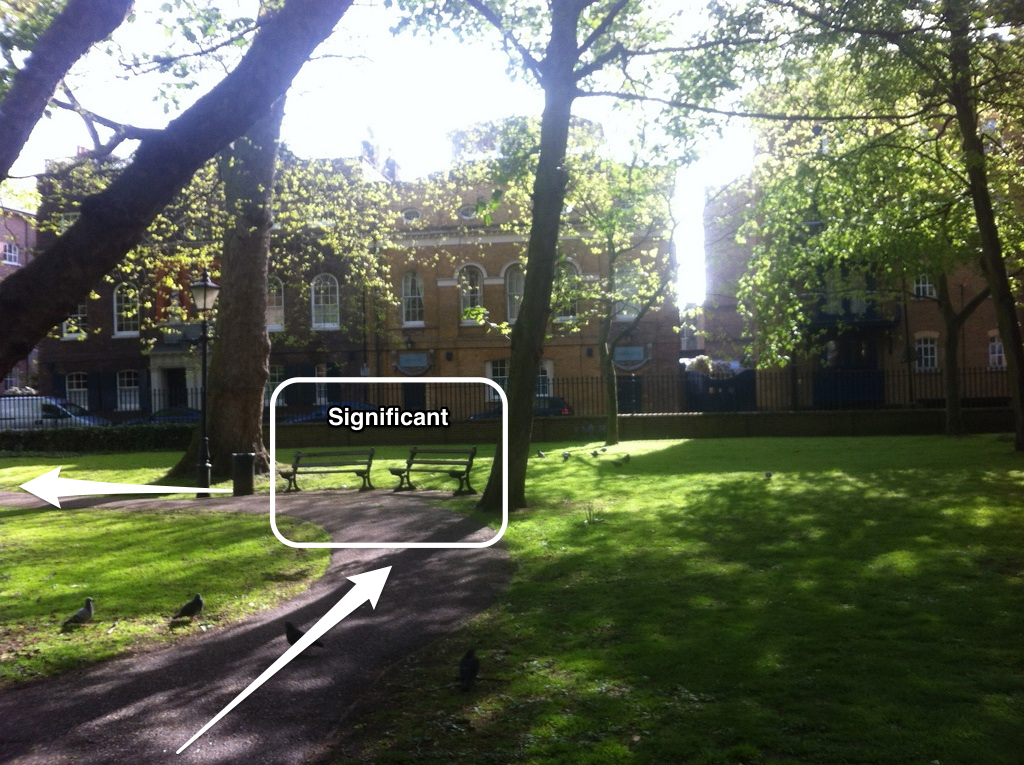Inspired by the collective intelligence of my network (awe-inspired is probably more accurate), I have been thinking a bit about ideas and the creative process, motivation, and the effect of all of this on identity.
Identities and Fence Straddling: Liminality
I have to admit that academically and intellectually I have tended to steer clear from conversations regarding identity as I struggled to find an accessible point to approach it. I didn’t have quite the intrinsic emotional connection to it as such. I felt (but no longer feel) as if my identity was such an eclectic amalgamation of disparate bits that I struggled to slot into a discussion around identity. All the travel, all the eclectic parts of my professional background, the movement, the writing, the research interests. I felt like I shed, naively, a search for identity a long time ago. My network has enlightened me on this, in particular my former supervisor Sian Bayne, Jen Ross, as well as Bon Stewart, Jesse Stommel (and others). Identity is an important factor in my work, even if I decidedly straddle the fence on academia or life outside its walls. Through sheer self-preservation, I will continue to cultivate connections and appeal to both sides of that fence, but I cannot pretend like part of that cultivation doesn’t involve identity development. It is real and I am involved in it.
However, this fence straddling (need a better metaphor, yes) has its costs and charms. I am in a perpetual state of liminality. I think the Wikipedia definition is quite succinct, itself taken from “Liminality and Communitas”, in “The Ritual Process: Structure and Anti-Structure” (New Brunswick: Aldine Transaction Press, 2008). I could have just references the original work, but that is an example of me straddling the fence. My academic identity might have benefited from acknowledging the source work, while the non-academic community would have called my bluff and told me to admit taking it from Wikipedia. So I straddle the fence. Anywho, liminality is:
the quality of ambiguity or disorientation that occurs in the middle stage of rituals, when participants no longer hold their pre-ritual status but have not yet begun the transition to the status they will hold when the ritual is complete. During a ritual’s liminal stage, participants “stand at the threshold” between their previous way of structuring their identity, time, or community, and a new way, which the ritual establishes.
I thought about this for a bit as it does ably describe the state I find myself in, at least for the last ten years or so. I find myself standing perpetually at several thresholds, perpetually awaiting a transition to a particular status, or a particular way of structuring my time, identity, or community (which speaks to some of the work I do with Pedagogy of Simultaneity). However, the definition, however beautiful (at least in comparison to most academic writing), emphasizes the “ambiguity” or “disorientation” at the expense of the freedom and possibility of such a position. I have found these thresholds to be quite advantageous positions, legitimate peripheral participation to use another theoretical stance. You have freedom to maneuver, to sample, to pick and choose your engagements, and to avoid passing the threshold altogether if you so desire.
Ambiguity should not be conflated with disorientation. It is a perfectly acceptable environment for idea generation, for assembling learning from disparate bits. I learn most in liminal, ambiguous states. Sure, there are costs involved. Ephemerality, incessant motion, uncertainty. But I think they are generally acceptable as this state of liminality provides me so much. It is a generative state of being. And a perfectly acceptable approach to all of this is to engage in indulgent flânerie, to pick and choose engagements, to listen attentively and create relentlessly. And yes, all those who wander are not lost. Commit that to memory as it is a mantra for liminal states of being. Wander your way through the ambiguity, approach the thresholds and pass through the ones that speak to you. Let your ideas do the same.
Ambiguity generates creativity; it is an exercise in large numbers
Now these identities that I am cultivating (academic or non-academic; peripheral or full participant; aloof or engaged) are, despite my best efforts, output oriented. They are, to some degree, the results of specific activities leading to specific outputs (or in my case, outpourings). They could be writing. Or discussion. Or teaching. Or research and reflection. In my experience, my best efforts come with the alignment of my natural state of ambiguity (often in one geographical place thinking of another; in one professional position thinking of another; in one project or idea thinking of another) with time and a dedication to the creative process. A belief that for every 10,000 words I write, a hundred or so might be perfect or perfectly representative.
The ambiguity, or the liminal state, is the environment which is generating this desire for creative artifice, this desire to forge something from its endless, tidal like contours of stimuli. My capacity for dealing with ambiguity gives me the ability to function in these precariously volatile states. My heart and head plow forward, clumsily, cutting and carving and assembling and trying, endlessly trying, to say something, express myself, represent what I see and know to be true. It is my mission, my life’s work. I feel bad if I don’t write everyday. I have word counts I strive for every day. I know that there is something out there, somewhere, in those word counts. A training, a discipline.
Ideas pour through this environment like torrents. Some never get further then that murky, ambiguity of a kernel of an idea. Some are given structure, but are never given life outside of me. Some are finished and jettisoned into the ether of audience. Some make their way back to me and generate more ideas. It is a beautiful process. You lament the little ones that didn’t make it, keep them around for awhile even though you know the power of ideas is in their currency and stickiness and some of these have neither. But you love them regardless.
Truth be told, the ones I think the least about are the ones that made it to the larger audience through this blog, through publications or images or what have you. They were complete and they were mature enough to live on their own, outside me. I wish them the best. Some died on the vine, some loiter for years and make their way, iterated, into other works. The same process of liminality that occurs in these ambiguous states of identity occurs within ideas in some respect. They often bounce around our heads, the internet, our laptops, or in our hearts, and some pass the threshold and some don’t. But you love them all.
And through all of this activity, identities are being formed. Some thresholds are being passed and others approached. Some doors are closed, possibly forever. Rarely do we return to the same points in these processes. We are or they are changed. Ideas circle around looking for a home; identities are forged and forgotten. Some are loved and some are orphans, but all are alive. Wistfully, at times, peering across the threshold.
The last minute of this video speaks to my relationship with ambiguity. Early evening in Hong Kong. A new city, unfamiliar terrain. No internet connection. Just my wife and I circling in a boat, looking for a port. But the ideas are generated in the water, in the journey.


[…] However, my data suggested that perhaps the implicit argument in Community of Practice theory, that the desired or natural trajectory of legitimate peripheral participants (in my case, graduate students), is towards the center, towards greater participation in the community. I now don’t believe this to be the case. More importantly, zeroing in on this centering process of becoming a full participant in a community, I believe, removes a bit of the agency that the learner has in this process. Some are not thwarted in their efforts to become full members of the community; some are intentionally remaining on the peripherals of many communities, the state of liminality that I referred to in my last post. […]
Beautiful writing and thinking by @mseangallagher on “Ideas & identities in liminality” http://t.co/BKSVJNKn6W“
thank you. RT @marloft: Beautiful writing and thinking by @mseangallagher on “Ideas & identities in liminality” http://t.co/jRGfBloy6q
RT @catherinecronin: thank you. RT @marloft: Beautiful writing and thinking by @mseangallagher on “Ideas & identities in liminality” http:/…